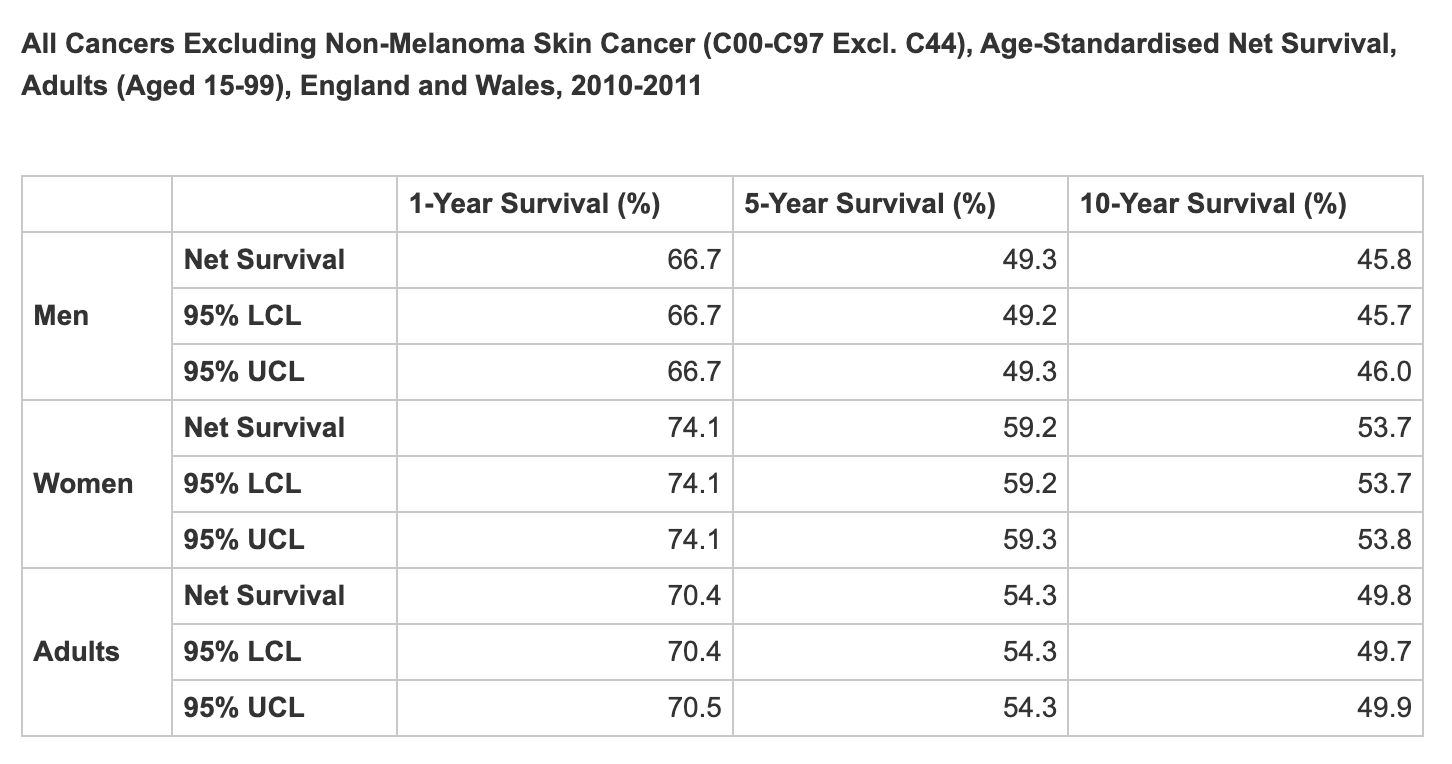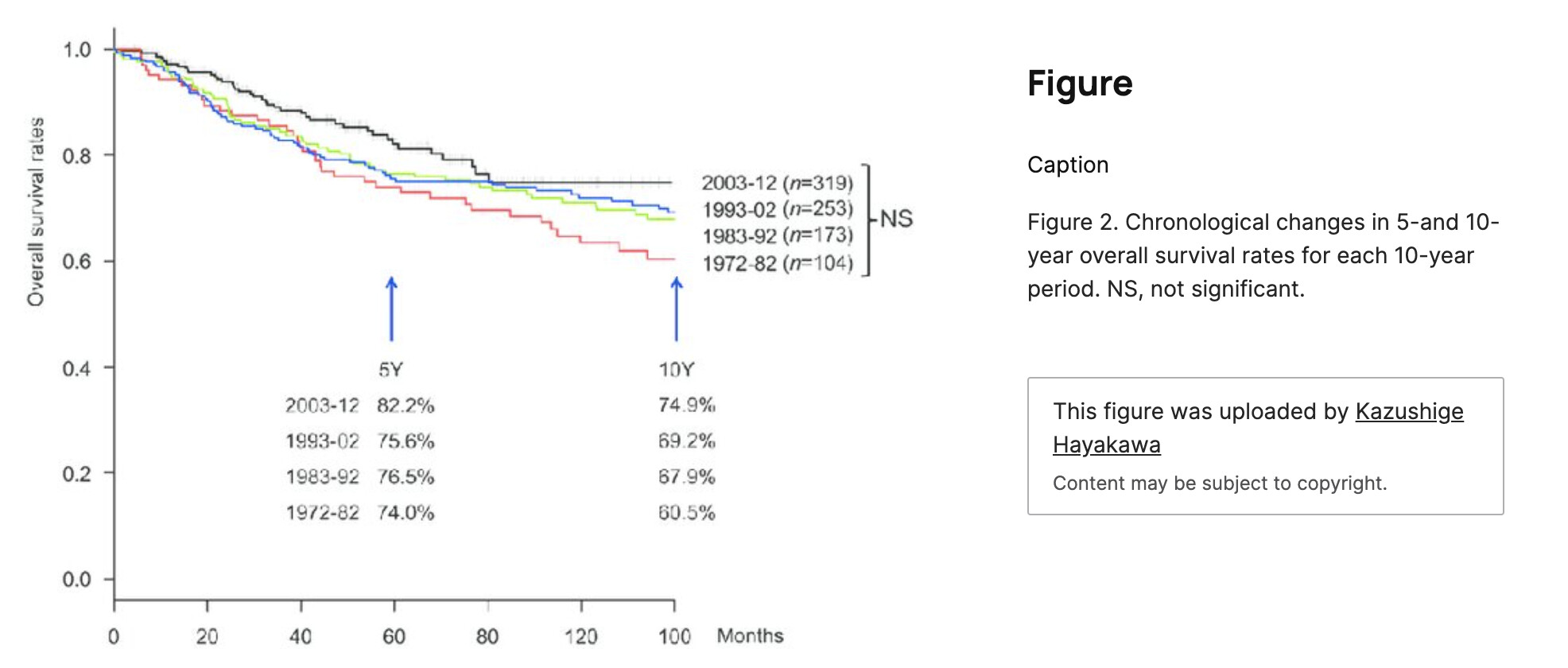PD-1 inhibition is also a promising senolytic approach.
Yes. It’s 100% a cure if your genetics match up. Unfortunately, only 5-10% of all rectal cancer will be a match. However, for those lucky few, they now have a full cure.
There was promise that it could be applied to other cancers as well. I hope it can work with additional cancers!
This trial’s new approach, which uses immunotherapy alone, benefits a subset of patients who have tumors with specific genetic characteristics known as mismatch repair-deficient (MMRd) or microsatellite instability-high (MSI).
As MSK’s rectal cancer trial continues, Dr. Diaz hopes “it’s the tip of the iceberg.” He explains: “We are investigating if this same method may help other cancers where the treatments are often life-altering and tumors can be MMRd. We are currently enrolling patients with gastric (stomach), prostate, and pancreatic cancers.”
It looks like a promising step towards medicine 3.0, personalized precision medicine.
What’s the source for that? (I only skimmed through the article)
There are many ongoing trials for other types of cancer. Let’s hope ![]()
The source is the article at the bottom of my reply.
Thanks. Excerpts:
Between 5% and 10% of all rectal cancer patients are thought to have MMRd tumors, including all the patients in the MSK clinical trial that Sascha participated in. There are 45,000 Americans diagnosed a year with rectal cancer.
Dr. Cercek says: “The most exciting part of this is that every single one of our patients has only needed immunotherapy. We haven’t radiated anybody, and we haven’t put anybody through surgery.” She continues, “They have preserved normal bowel function, bladder function, sexual function, fertility. Women have their uterus and ovaries. It’s remarkable.”
Drs. Cercek and Diaz want people with rectal cancer tumors that are MMRd to know the clinical trial continues to enroll patients and is growing. Dr. Diaz says, “Our message is: Get tested if you have rectal cancer to see if the tumor is MMRd. No matter what stage the cancer is, we have a trial at MSK that may help you. And MSK has special expertise that really matters.”
As MSK’s rectal cancer trial continues, Dr. Diaz hopes “it’s the tip of the iceberg.” He explains: “We are investigating if this same method may help other cancers where the treatments are often life-altering and tumors can be MMRd. We are currently enrolling patients with gastric (stomach), prostate, and pancreatic cancers.”
Dr. Diaz has coined a term for this new method of using immunotherapy alone to target MMRd tumors, calling it “immunoablative” therapy — that means using “immunotherapy to replace surgery, chemotherapy, and radiation to remove cancer.” He adds, “That might sound futuristic — but in this trial, we have a clinical example where that happened.”
ChatGPT tells me that about 5% of all cancers are “MMRd”, the rate being higher or lower depending on the type of cancer. So potentially we now have a 100% effective cure for 5% of cancers?
Yes. It’s a 100% cure for 5% of rectal cancers. However it should work with other types of cancers. This will cure 1000s of people every year just for rectal cancer. If it works for prostate and pancreatic cancer, it will be a miracle cure. It’s a wonderful drug.
Rectal not renal ![]() For rectal cancers it’s 5 to 10%. For ALL cancers it’s about 5% (TBC).
For rectal cancers it’s 5 to 10%. For ALL cancers it’s about 5% (TBC).
A reflection of the idea that there will not be a single cure for cancer.
I think it is possible that there will be a protocol with a number of interventions that resolve more than 15% of cancers. (possibly the majority)
Yes. They’ll take your cancer cells and do a specific treatment just for that with 100% efficacy. Some friends are working on that.
My only question is: how long to reach 95% 5y survival rate? Today we’re at 71% (across all cancers) but we only gain 1 point each year. So prediction markets have 75% in 2029 and 95% in 2051: When will the average five-year survival rate of all cancers exceed 95%?
Hopefully markets are wrong and there will be some kind of breakthrough accelerating progress…
I still believe in hyaluronic acid.
Hyaluronic acid
How might hyaluronic acid prevent/treat cancer? Any studies?
Edit: maybe in reference to naked mole rats
I would prefer they pursue cure rates rather than 5 year survival. I know that’s the standard but not really helpful when someone dies at year 6.
It is a reference to naked mole rats indeed.
We’ve already discussed this in another thread: Cure is always a % after some years. Humans die anyway. The 5y survival rate gives you the 10y as well. You just multiply. So 95% over 5y means about 90% survival rate over 10y (0.95x0.95). Of course we want ideally 100% survival rate over 20+ years but if we reach >95% survival rate over 5y I think cancer will be considered cured. Even more so if the rate is higher in healthy people diagnosed early (let’s say 99%).
Medicine doesn’t work by simple math. Keeping someone alive 5 years in no way guarantees a similar rate of survival for another 5 years.
Agree, even in a healthy person, the probability of survival over the next 5 years is generally better than the 5 years after that.
However, you have to draw the line somewhere. 5 years seems like a reasonable timeframe for cancer studies given the high mortality rate. I would be surprised if it skews treatments to have a shorter effective duration, e.g. it works for 3 or 4 years so the 5 year survival looks good, but then year 6 and 7 everyone dies; that scenario seems unlikely.
My father-in-law had one of the deadliest forms of cancer, pancreatic. With today’s treatments, he survived just over 4 years which is amazing. 20 years ago, he’d be lucky to survive 1 year.
Cancer treatment has come a long way already.
You’re totally wrong @KarlT: the 10y survival rate is just below the 5y one, so my rule of thumb (10y-survival = square of 5y-survival) is actually very conservative:
You can see that if you survive past 5y you’re very likely to make it to year 10:
Source: Cancer survival statistics for all cancers combined | Cancer Research UK
Another source: Clinical Outcomes of 849 Laryngeal Cancers Treated in the Past 40 Years: Are We Succeeding? 2013
Of course, there are huge variations among cancer types and stages. But the point stands:
- The 5-year survival rate is a great KPI (that’s why it’s the most used one!).
- If we reach a 5y survival rate >95%, everyone will consider cancer to be cured. Problem solved.
There’s actually one cancer with a survival rate of 95%: testicular cancer. And all sources say “Testicular cancer is curable.” Even though some people do die from it.



